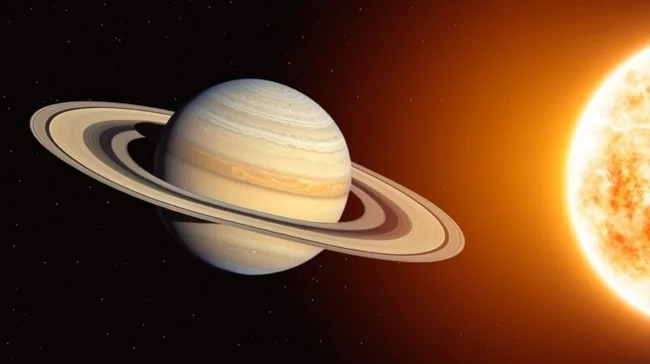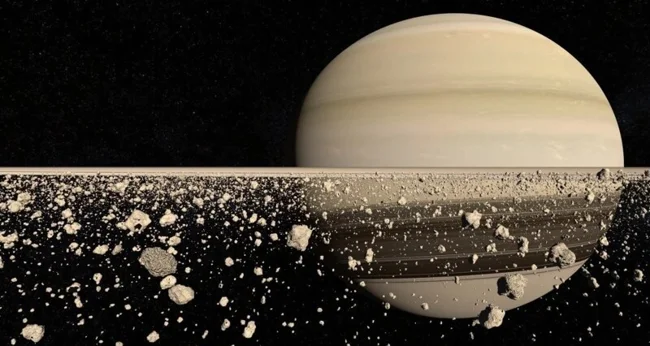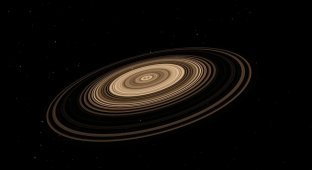Of all the planets in the Solar System, Saturn seems especially spectacular. All thanks to its wide, sparkling rings. They give the celestial body an almost theatrical expressiveness. It is not surprising that many people wonder: what are Saturn's rings made of, where did they come from, and is this planet really so unique? It turns out that everything is much more interesting than it seems at first glance. 
The first person to notice the oddities around Saturn was Galileo Galilei back in 1610. True, his telescope was too primitive to clearly distinguish the shape of the rings, and he described what he saw as "ears" or even "three planets standing next to each other." Decades later, in 1655, the Dutch astronomer Christiaan Huygens realized that a thin flat disk extends around Saturn.
And in the 19th century, it became clear that this disk is not solid, but consists of many small rings.
In the same 19th century, the Scottish physicist James Clerk Maxwell conducted a mathematical analysis and came to the conclusion that the rings cannot be a solid structure - otherwise they would simply fall apart under the influence of gravity. He suggested that they consist of many small particles moving in orbit independently of each other. This hypothesis was later confirmed by the observations of James Keeler and Aristarkh Belopolsky. They measured the rotation speed of different sections of the rings and showed that the inner parts move faster than the outer ones, which means that it really is not a solid disk.
The most significant breakthrough in the study of the object occurred thanks to the Cassini automatic interplanetary station, which spent 13 years near Saturn, from 2004 to 2017. It took hundreds of thousands of pictures and transmitted a lot of data, including information about the composition of the rings.
It turned out that they are almost 99% made up of... ordinary ice. The remaining percentage is dust, silicates and other impurities. The particles can be very different: from microscopic dust particles to blocks the size of a multi-story building. And although the rings seem solid, they are actually very thin - by cosmic standards. With a width of hundreds of thousands of kilometers, their thickness usually does not exceed several tens of meters.
But where did they come from? One of the most popular theories suggests that the rings were formed after a large moon of Saturn was destroyed. It came too close to the planet and ended up in the so-called Roche zone, where gravity prevents satellites from remaining intact. According to a recent NASA model, this hypothetical moon, which scientists have named Chrysalis, was shattered into icy pieces, and the core was absorbed by the planet itself.
And perhaps the formation of the rings occurred quite recently, around the time of the dinosaurs. In the standards of the Universe, almost yesterday.
There is another version: the "halo" could have appeared at the birth of Saturn - formed from the remains of dust and ice that did not become part of the planet or its moons. But there is a problem: over billions of years, the rings should have become contaminated with meteorites and dust, but they are still almost purely icy. This makes the version of a recent origin more plausible.
Despite their cosmic youth, Saturn's rings are already gradually disappearing. Charged particles rotating with the planet's magnetic field seem to blow away icy dust, and it slowly settles in the atmosphere. Because of this, the rings become thinner. Scientists assume that in 100 million years they may disappear completely.
Interestingly, Saturn is not the only planet with rings. Jupiter, Uranus, and Neptune also have them. It's just that their rings are much less noticeable, since they consist mainly of dark dust and small stones, and not of sparkling ice. Uranus's rings, for example, are so dim that they were discovered only in the 20th century, and by accident.
But Saturn shines in a telescope with amazing brightness - all thanks to pure ice, the span of the rings, and the fortunate tilt of the axis. So it's certainly not the only one of its kind, but it's definitely the most impressive. 
Add your comment
You might be interested in:























